LT. COL. ROBERT ROSS, COL. BRYAN SPARLING
Nothing has transformed modern life like the microprocessor, and nothing has significantly shaped the modern global economy as the rise of cyberspace.
In the first half of the 20th century, through two world wars, the U.S. Army transformed from a largely horse-powered constabulary force into the world’s premier industrial age army.
In the same way, exponential technological change is driving Army transformation today. Cyberspace, the global network of information technology infrastructure and data, has emerged as the most powerful phenomenon in human history, shaping all aspects of social, economic and political interaction. In the military realm, cyberspace has been designated the fifth warfighting domain, joining the traditional air, land, maritime and space domains.
The Army established the U.S. Army Cyber Command (ARCYBER) in 2010 to lead development and employment of Army capabilities in this domain of competition and potential conflict. Still, many in the Army and beyond have little idea about the command’s mission and how it contributes to national security and modern warfare.
As the command passes its 12th birthday, here’s a look at what ARCYBER is as an organization, what ARCYBER does and how ARCYBER has evolved.
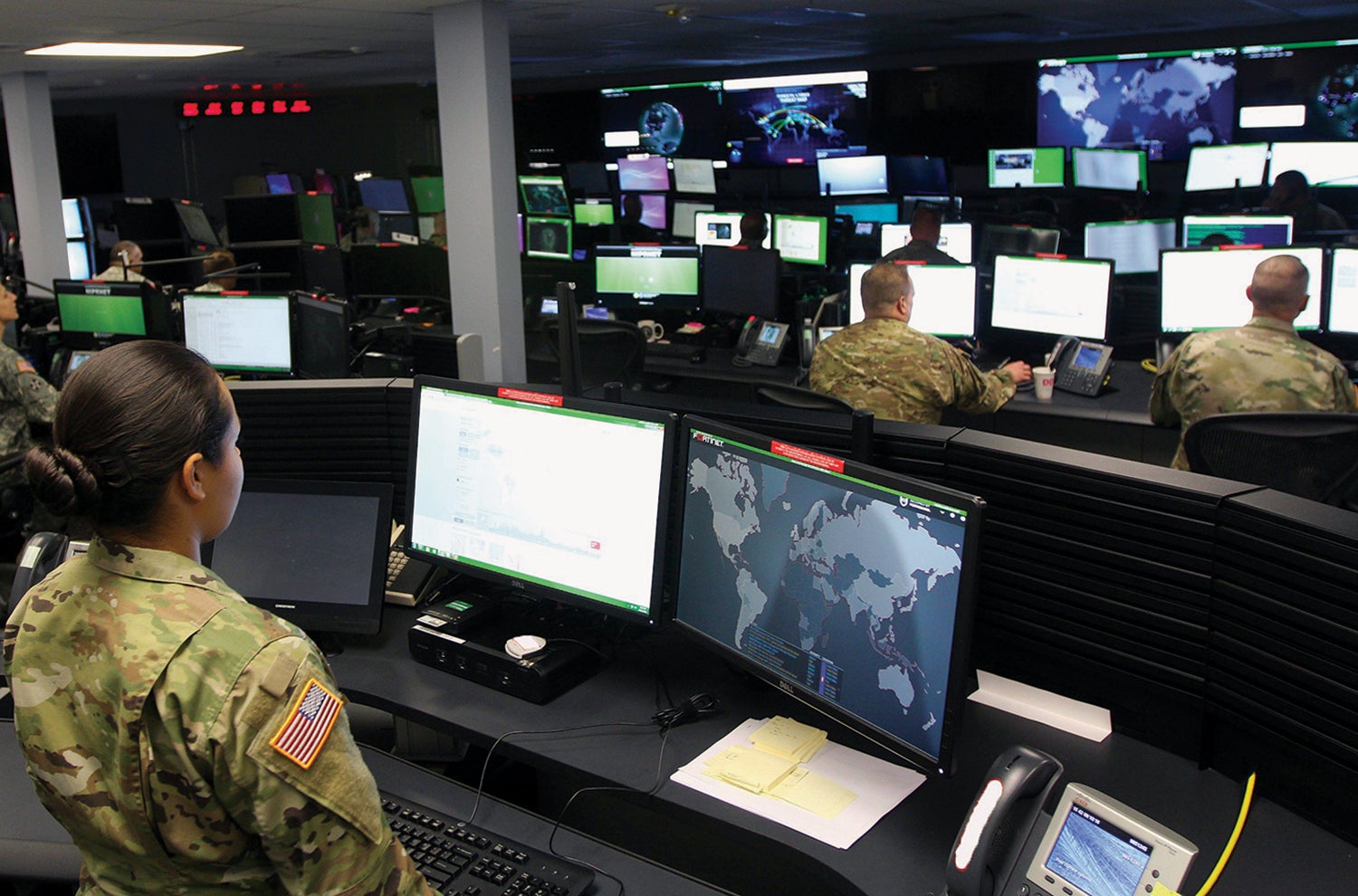
A soldier with the 780th Military Intelligence Brigade (Cyber) watches over the Joint Mission Operations Center, Fort Meade, Maryland. (Credit: U.S. Army/Steven Stover)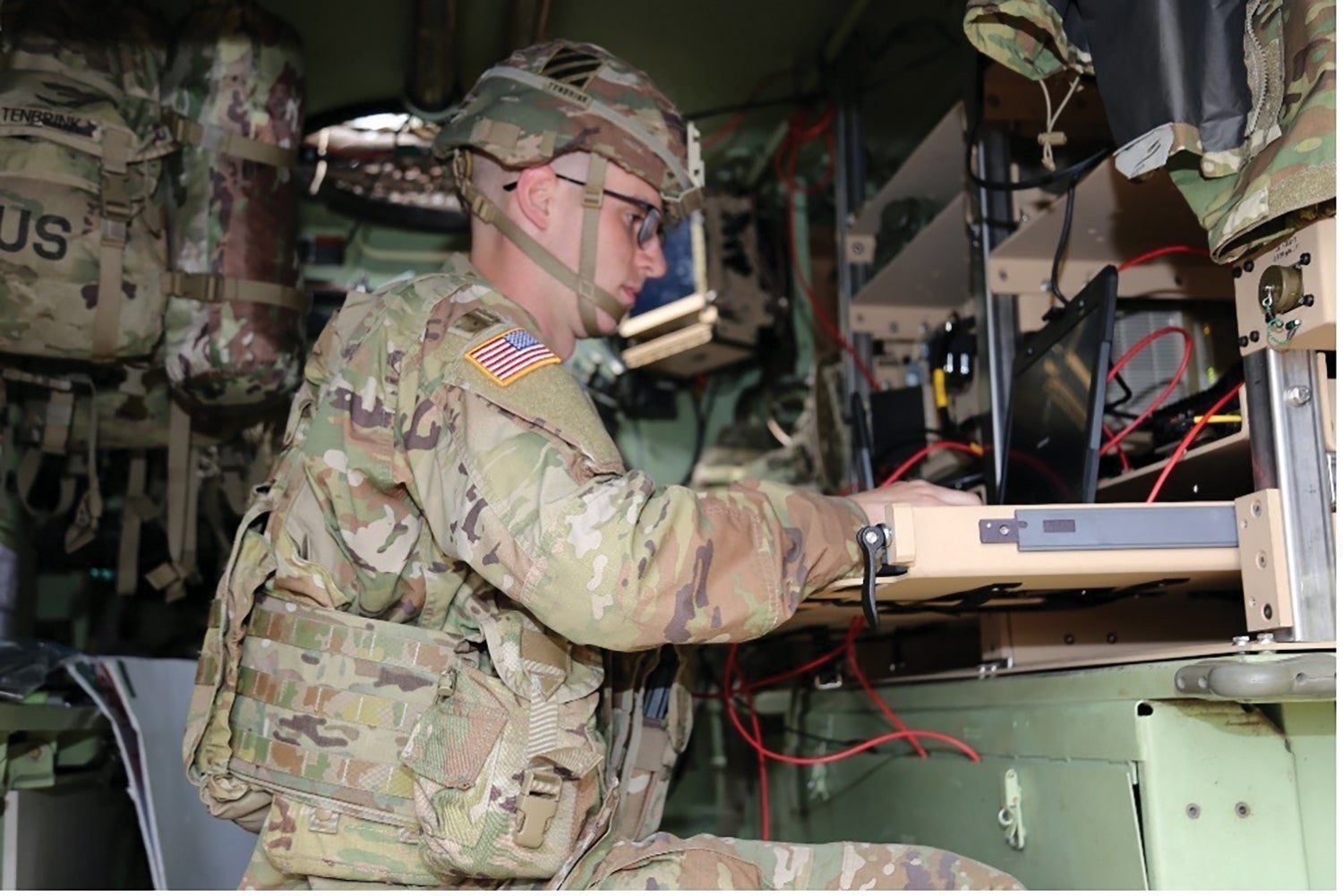 Spc. Elijah Tenbrink, an intelligence analyst, participates in a test of an updated Army network at Fort Stewart, Georgia. (Credit: U.S. Army/Amy Walker)
Spc. Elijah Tenbrink, an intelligence analyst, participates in a test of an updated Army network at Fort Stewart, Georgia. (Credit: U.S. Army/Amy Walker)
 Spc. Elijah Tenbrink, an intelligence analyst, participates in a test of an updated Army network at Fort Stewart, Georgia. (Credit: U.S. Army/Amy Walker)
Spc. Elijah Tenbrink, an intelligence analyst, participates in a test of an updated Army network at Fort Stewart, Georgia. (Credit: U.S. Army/Amy Walker)One of a Kind
ARCYBER is a one-of-a-kind command providing cutting-edge capabilities to Army and joint force commanders. Headquartered at Fort Gordon, Georgia, ARCYBER is a functional Army service component command. Its headquarters building, Fortitude Hall, is viewed as the global cyber power projection platform for the Army.
ARCYBER envisions networks as the premier 21st century weapons systems in which data is the precision ammunition. The commanding general of ARCYBER, currently Lt. Gen. Maria Barrett, also commands Joint Force Headquarters-Cyber.
The command comprises dedicated soldiers, civilians and contractors conducting cyberspace, electromagnetic warfare and information operations globally—24/7—from facilities around the globe. ARCYBER’s diverse workforce spans myriad disciplines, from intelligence, signal and cyber to strategists, data and social scientists and administrative and logistics personnel.
ARCYBER’s missions and tasks are dedicated to supporting Army and joint force operations in the information dimension. The command focuses its diverse mission and tasks along five core mission threads: operate, defend, attack, influence and inform. ARCYBER integrates these efforts within its Information Warfare Operations Center. The center is the integration point for all five of ARCYBER’s mission threads and allows the commanding general to sense, understand, decide, act and assess through and within the global information dimension.
The center also harnesses the power of ARCYBER’s big data analytics platform. This critical capability enables the Army to rapidly react to network intrusions, troubleshoot network problems, map the electromagnetic spectrum and derive unique intelligence for worldwide dissemination.
ARCYBER’s five core mission threads follow:
Operate and Defend
ARCYBER operates and defends the Army’s portion of the Department of Defense Information Network, weapons systems and their associated data in support of Army and joint forces. The U.S. Army Network Enterprise Technology Command conducts this mission from network enterprise centers, regional cybersecurity centers and regional hub nodes at locations around the globe. The Network Enterprise Technology Command provides global command, control and network integration from the Army’s portion of the Department of Defense Information Network Operations Center at Fort Huachuca, Arizona.
The Army Cyber Protection Brigade, known as the Hunter Brigade because it is on the hunt for malicious cyber activities and compromise issues, provides cyber protection teams to conduct defensive cyberspace operations. The U.S. Army Reserve and Army National Guard provide additional teams that serve as a strategic reserve and provide a Total Army force for the U.S. Cyber Command. Cyber protection teams are the maneuver units of action for defensive cyberspace operations, hunting for and clearing adversary activity on DoD Information Network networks and building mission defense plans for DoD organizations to ensure effective defense in depth.
Cyber protection teams also conduct “hunt forward operations” to bolster ally and strategic partner cybersecurity efforts and identify adversary malware before it affects the DoD Information Network.
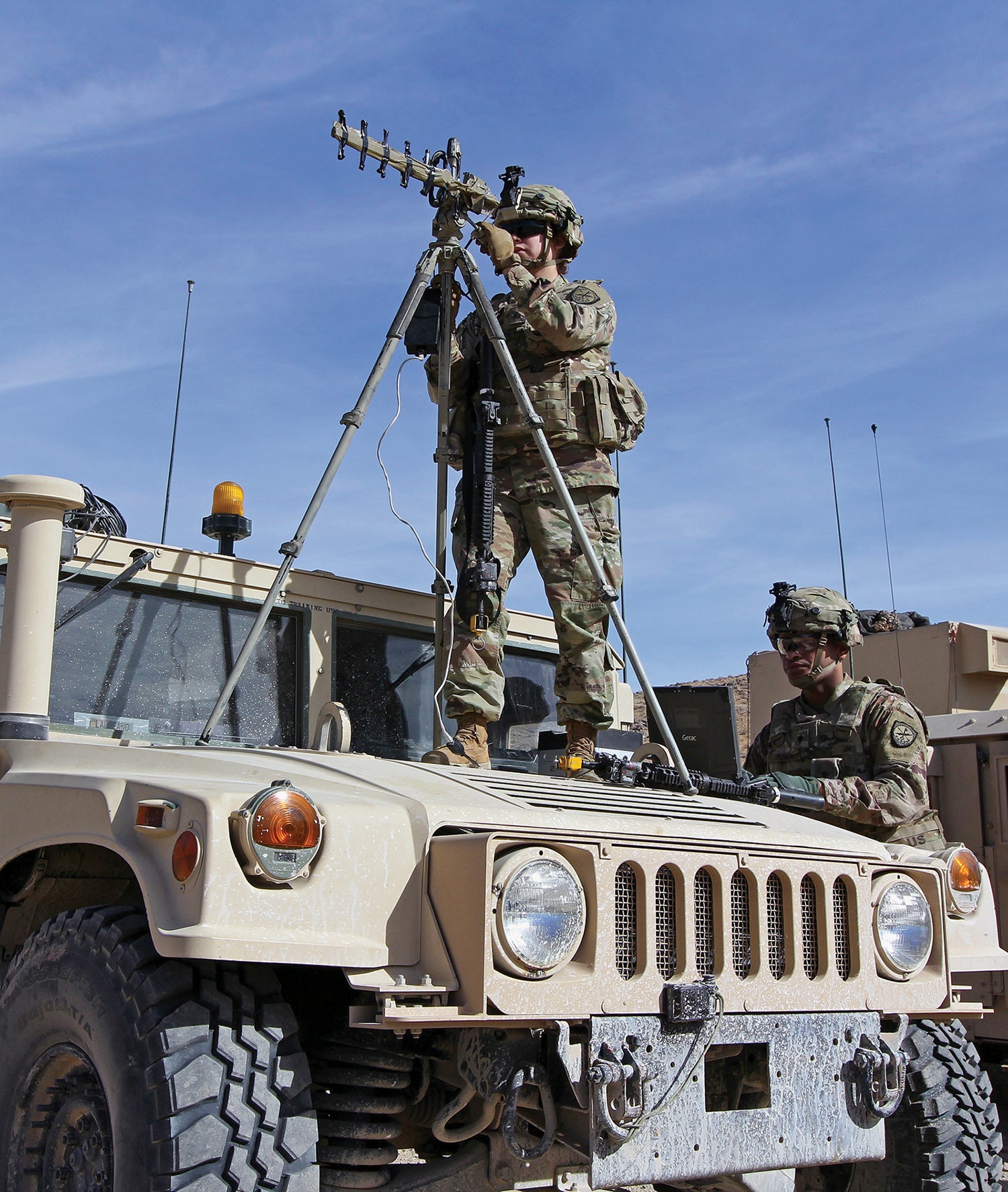
Soldiers from the 782nd Military Intelligence Battalion (Cyber) train at the National Training Center, Fort Irwin, California. (Credit: U.S. Army/Steven Stover)
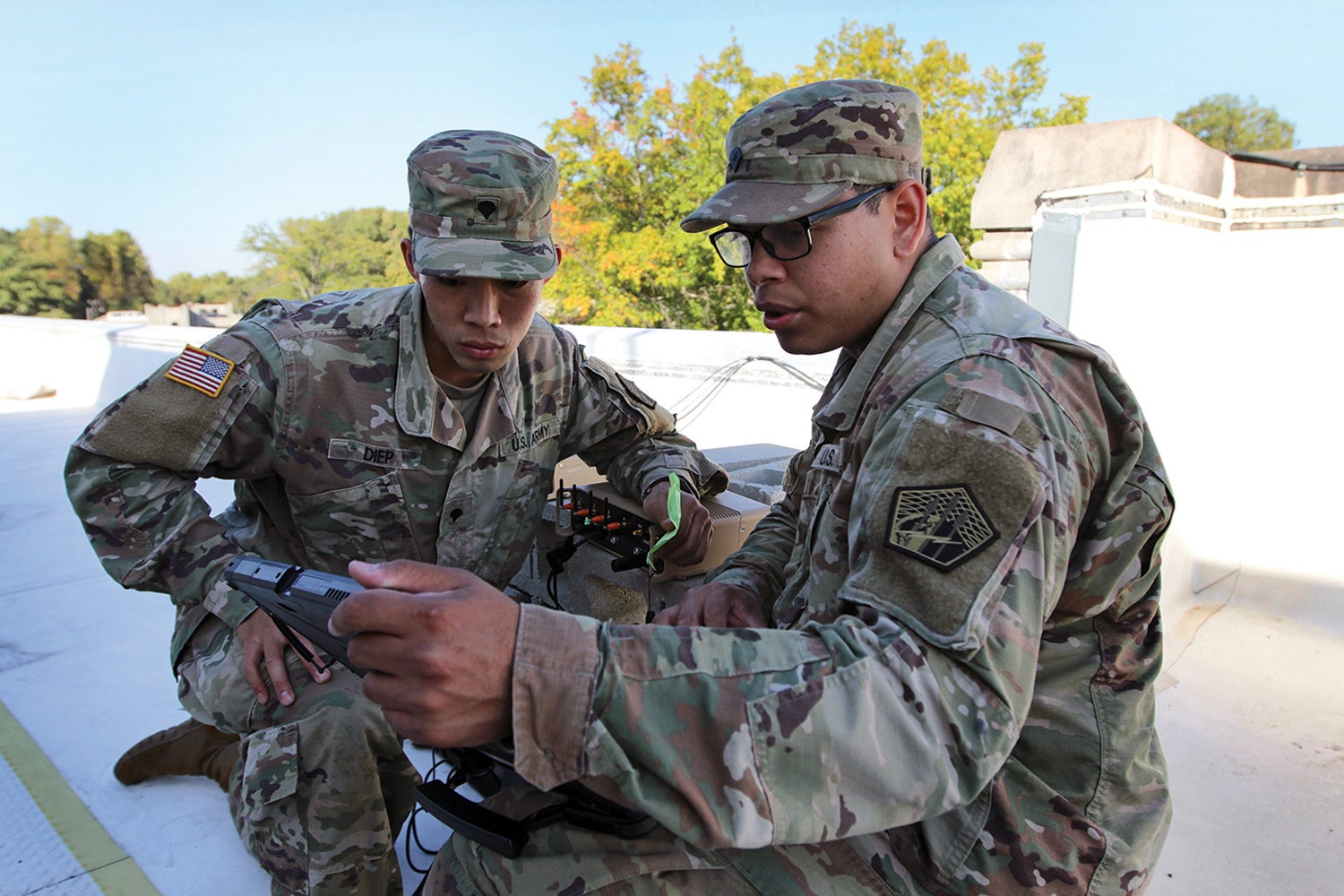 Spcs. Mike Diep, left, and Matthew Scruggs, of the 915th (now 11th) Cyberspace Warfare Battalion, participate in an exercise at Muscatatuck Urban Training Center, Indiana. (Credit: U.S. Army/Steven Stover)
Spcs. Mike Diep, left, and Matthew Scruggs, of the 915th (now 11th) Cyberspace Warfare Battalion, participate in an exercise at Muscatatuck Urban Training Center, Indiana. (Credit: U.S. Army/Steven Stover)Attack
ARCYBER delivers integrated offensive cyberspace effects, electromagnetic warfare and information operations globally. The 780th Military Intelligence Brigade (Cyber) provides cyber mission force teams to support national and combatant command offensive cyberspace operations. The 11th Cyberspace Warfare Battalion, previously known as the 915th Cyberspace Warfare Battalion, trains and deploys expeditionary cyber and electromagnetic activities teams to augment corps and below units with cyber, electromagnetic warfare and information operations capabilities.
Influence
ARCYBER integrates cyberspace effects, electromagnetic warfare and information operations to influence relevant actors’ decision-making, in addition to communicating, or obscuring, locations, capabilities and intent of Army forces. The U.S. Army 1st Information Operations Command trains and deploys information operations field support teams to provide planning support, including operational security, military deception and information operations’ core synchronization and integration functions. The 1st Information Operations Command augments Army special operations to enable military information support operations, social media collection, data analytics capabilities and digital advertising technology to deliver effective and influential messaging to adversaries.
Inform
Speed in the information realm is critical to determining whether truth or disinformation prevails. ARCYBER is building technological solutions using cloud-enabled big data analytics to rapidly inform Army and joint force commanders with unique intelligence that holistically encapsulates the information dimension. Big data analytics will increase the speed of U.S. leaders’ decision cycles while rapidly enabling the Army to deny, delay, disrupt or destroy the decision cycles of adversaries.
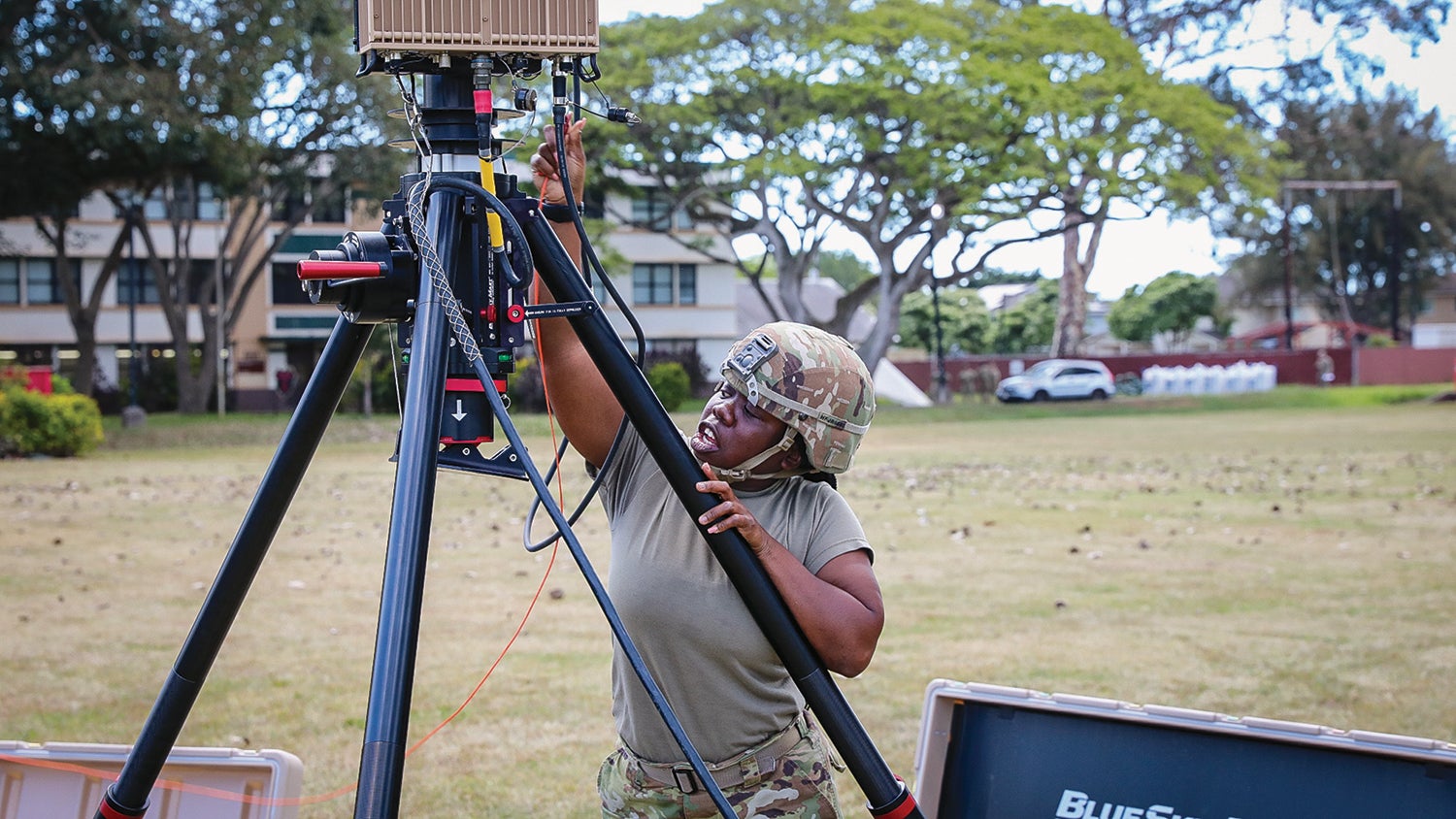 Sgt. Jayla Rogers, of the 2nd Brigade Combat Team, 25th Infantry Division, trains on a new radio system at Schofield Barracks, Hawaii. (Credit: U.S. Army/Master Sgt. Lekendrick Stallworth)
Sgt. Jayla Rogers, of the 2nd Brigade Combat Team, 25th Infantry Division, trains on a new radio system at Schofield Barracks, Hawaii. (Credit: U.S. Army/Master Sgt. Lekendrick Stallworth)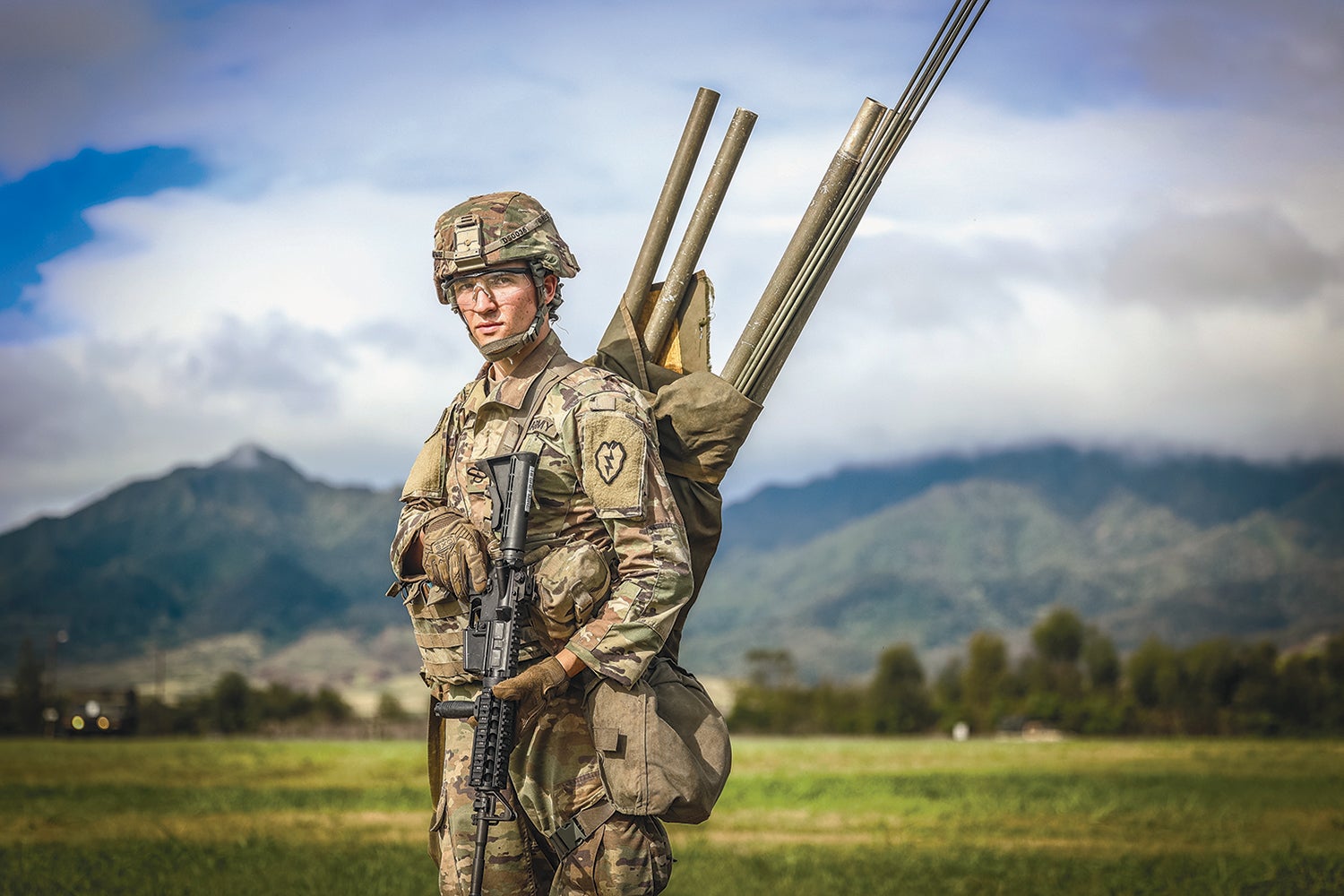
A fire control specialist from the 25th Infantry Division at Schofield Barracks. (Credit: U.S. Army/Spc. Jessica Scott)
Streamlining Operations
Evolution has constantly required DoD to identify novel requirements for the newest warfighting domain. The staffing, training, equipping and certification of cyber mission force teams began in 2012 to support the directed development of the cyber mission force by 2018. In 2013, U.S. Cyber Command and the Army directed ARCYBER to stand up a Joint Force Headquarters-Cyber at Fort Gordon to provide Mission Command to cyber forces and cyberspace capabilities directly supporting U.S. Army Central, U.S. Army Africa (now U.S. Army Europe and Africa) and the U.S. Northern Command. In 2014, the Army established the cyber branch to recruit, train and manage the uniformed technical workforce required for success in the cyber domain.
As U.S. Cyber Command was elevated to a unified combatant command, ARCYBER became an Army service component command to U.S. Cyber Command in 2017. In the same year, the Army decided to improve command and control in cyberspace by assigning Network Enterprise Technology Command to ARCYBER.
In 2019, ARCYBER stood up the 915th Cyberspace Warfare Battalion, now the 11th Cyberspace Warfare Battalion, to provide cyber-electromagnetic activities support to corps and below units. In 2021, the U.S. Army Intelligence and Security Command stood up the Cyber Military Intelligence Group to support Army and joint forces with specialized holistic information dimension intelligence.
Also in 2021, ARCYBER activated the 60th Offensive Cyber Operations Signal Battalion to operate and maintain its sophisticated offensive cyberspace infrastructure. Finally, to consolidate command and control for information operations, the Army assigned the 1st Information Operations Command to ARCYBER in 2021.
Evolving Mission
ARCYBER has grown significantly in size, capabilities and purpose since its inception. The mission has evolved from one of primarily operating and defending the Army’s portion of the Department of Defense Information Network to providing attack and influence options for execution in competition and in preparation for conflict. In 2018, Army senior leaders determined that ARCYBER’s mission was about more than cyberspace and determined it was about the information dimension—holistically.
ARCYBER is tasked with the convergence of cyberspace, electromagnetic warfare and information operations and rapidly providing multidomain options for commanders from the strategic to the tactical level. ARCYBER continues to strive and evolve into an organization designed to dominantly enable global combatant commanders to achieve information advantage.
No comments:
Post a Comment